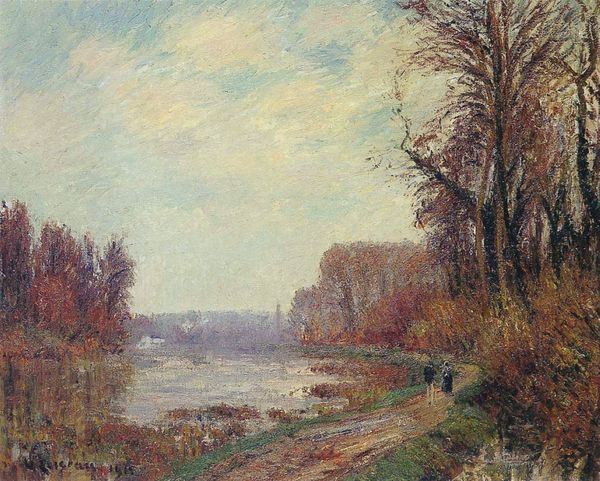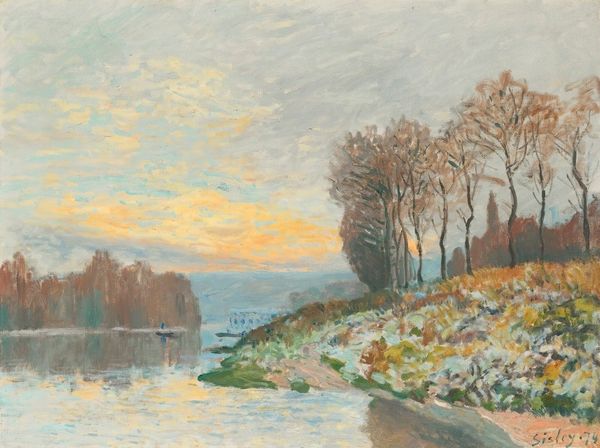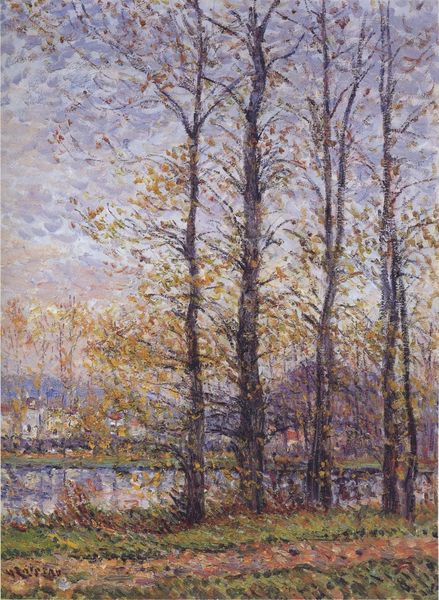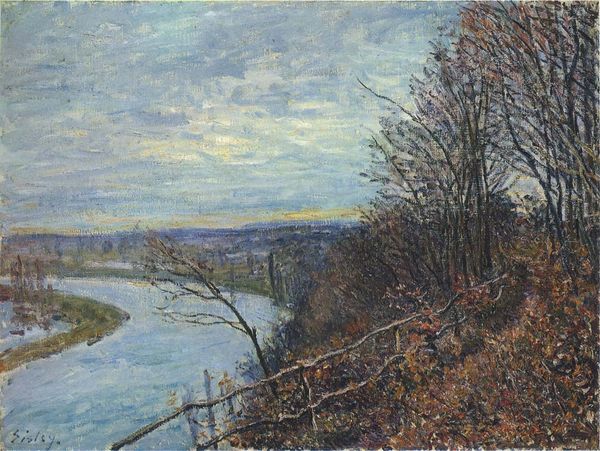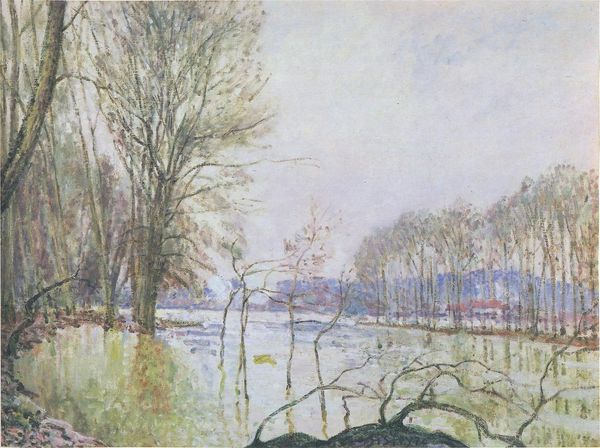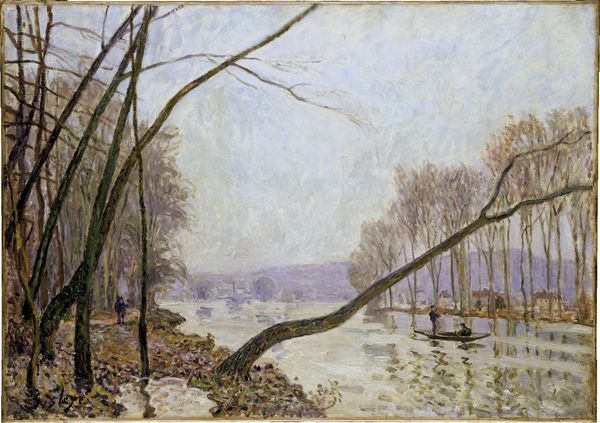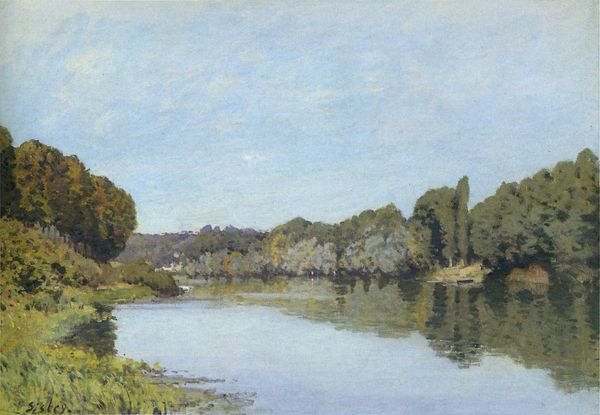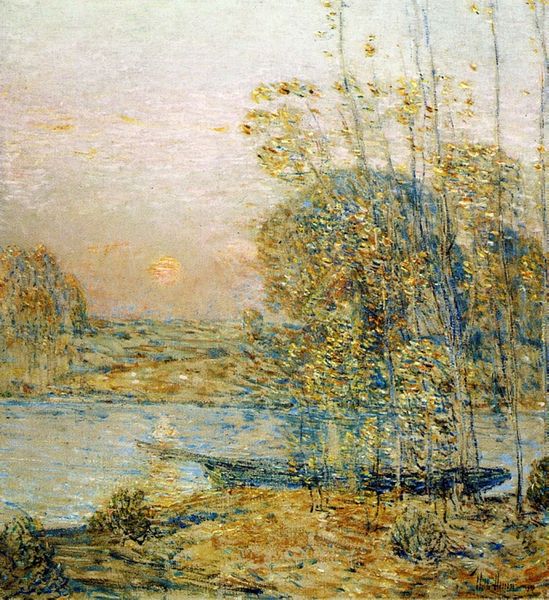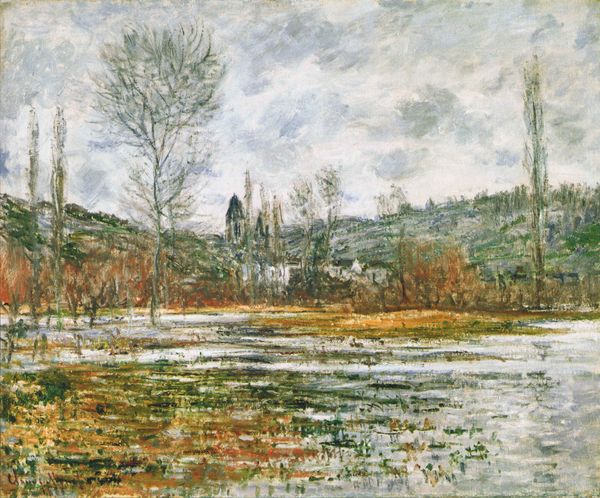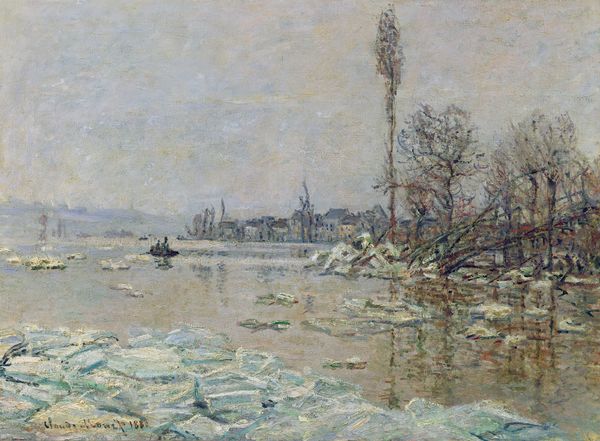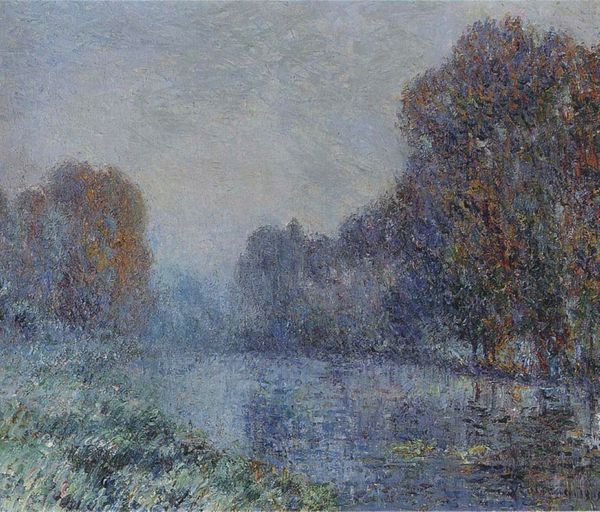
painting, plein-air, oil-paint
#
painting
#
impressionism
#
plein-air
#
oil-paint
#
landscape
#
impressionist landscape
#
oil painting
#
modernism
Copyright: Public domain
Editor: We’re looking at Alfred Sisley’s "The Seine at Bougival in Winter," painted in 1872 using oil on canvas. The cool, muted colors give it such a still, quiet feeling, almost melancholic. What do you see in this piece, and how do you interpret its significance? Curator: Sisley painted this scene in the aftermath of the Franco-Prussian War, a period of immense social and political upheaval in France. The serenity you describe seems almost defiant, doesn’t it? To find beauty in the everyday, in a world recovering from devastation... it's a powerful act. Do you see how the light reflects not just on the water, but on the snow as well? Editor: Yes, and it’s such a subtle range of colors – not just white, but hints of blue, pink, and yellow. It almost feels like he's imbuing the scene with hope. Curator: Precisely. The Impressionists were, in a sense, democratizing art. By painting these ordinary scenes en plein air, they challenged the academic tradition of idealized, historical subjects. Sisley’s Seine isn’t a grand statement of power, but a quiet observation of the world available to everyone, rendered accessible through his choice of subject matter and artistic technique. What public did Impressionists intend to reach? Editor: So, by shifting the focus to landscapes and everyday life, the Impressionists were really changing what art was for and who it was for. That's something I didn't fully grasp before. Curator: Exactly! Art became less about celebrating the powerful and more about reflecting the experiences of everyday people. And how that changed public art perceptions in that day. Editor: It's fascinating how knowing the historical context changes the whole feeling of the painting. I see now a connection to society, more than I had first imagined. Curator: Indeed. Seeing art as part of broader cultural and political currents enriches our understanding and appreciation.
Comments
No comments
Be the first to comment and join the conversation on the ultimate creative platform.
